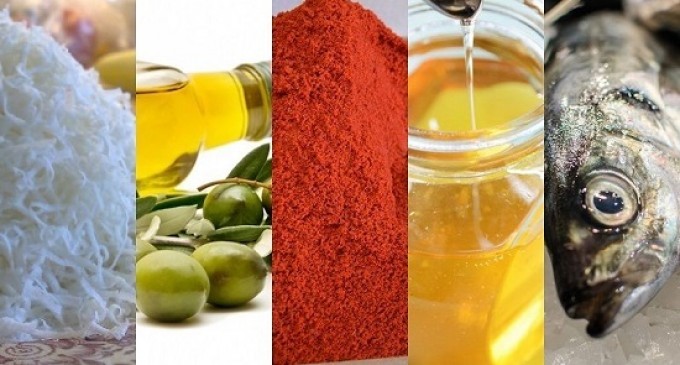
Many of us know that we buy foods with additives and preservatives and maybe even a lot of sugar. Many of us have accepted this. However, you probably didn't know that what you may be buying may not even be the real thing!
The Way To Tell If A Food Is Real Or Not Is:
The distribution and selling of counterfeit foods is officially known as economically motivated adulteration (EMA), a subcategory of food fraud. EMA can be anything from altering the weight of the product by adding a lower quality ingredient to tampering with the product’s label. Diluting fruit juice with water, adding chemicals to boost the protein content of a food, and changing the expiration dates on meat labels.
Parmesan Cheese
The FDA has found companies shilling “100% real” Parmesan with fillers like wood pulp, cellulose, and super cheap cheddar. In fact, an FDA analysis suggests there’s no actual Parmesan cheese in the Market Pantry brand 100% grated Parmesan Cheese sold at Target.
If you want the real deal, Liz Thorpe, author of The Murray’s Cheese Handbook and The Cheese Chronicles, recommends you buy a wedge of cheese from a whole wheel with the words “Parmigiano-Reggiano”
The beauty of this cheese is that you can always know that you’re getting the real thing.
Parmesan is expensive because it takes a lot of time and a lot of milk to make. If it’s super cheap, that’s a red flag.Olive Oil
Olive oil is tampered with in a lot of ways so distributors can make money.
Look for a harvest date on the label. Look for a seal of approval from the local or regional authority where it was bottled. This type of certification proves the oil is from where it says, and that the product isn’t a mish-mash of different oils. Just because a bottle of olive oil has an Italian flag on it, doesn’t mean it was made there.
Spices
The USP found that imported spices like saffron, black pepper, and paprika are commonly cut with cheap fillers.
Look for whole peppercorns, saffron threads, and whole dried paprika peppers, grind them yourself. Grinding whole spices into common measurements isn’t as hard as it sounds. One teaspoon of whole peppercorns equals one and a half teaspoons ground, saffron can be used whole or ground to taste.
Honey
Honey is an easy target for EMA because it’s so sweet. Some distributors add cheap filler like high fructose corn syrup or rice sugar to the mix. Others filter the product to remove pollen, making it harder to tell if a product is pure honey or not. Honey being filtered doesn’t necessarily mean that it’s fake, but it’s possible that you’re just eating sugar syrup. There’s also the risk that the cheap honey you nabbed at the market is an export from a country with lax food safety laws, like China.
Buy honey from a trusted source like a local farmer’s market, community market, or local honey from your grocery store. Spread the honey on a piece of bread and let it sit for a few minutes. If the honey crystallizes and the top of the bread gets crunchy, it’s real. If it gets soggy, it’s fake.
Fish and Seafood
One study from Oceana and the National Seafood Inspection Laboratory found that around 33% of the fish they sampled was not the species consumers were led to believe. This is problematic when cheap or undesirable species with high mercury levels are substituted for safer or more expensive fish.
The FDA has a regularly updated list of seafood that is safe to eat, along with detailed information about the fish and the names they’re allowed to be called when being sold. The Environmental Defense Fund suggests you watch for these red flags when you’re shopping around:
A price too good to be true for a highly desired fish like red snapper or grouper.
Out-of-season fish, like wild salmon from Alaska, being sold “fresh” in winter months.
Wacky labels you know not to be true, such as “farmed Chilean seabass” or “wild Atlantic salmon”
If something about the fish seems fishy, press the chef or fish seller for information.
Gross!
Now that you know how to tell the difference between fake and real foods, you will be more cautious when you grocery shop. Did you know about these foods?
Let Us Know What You Think About It!
Article & Photo Source: Life Hacker


There are no comments at the moment, do you want to add one?
Write a comment